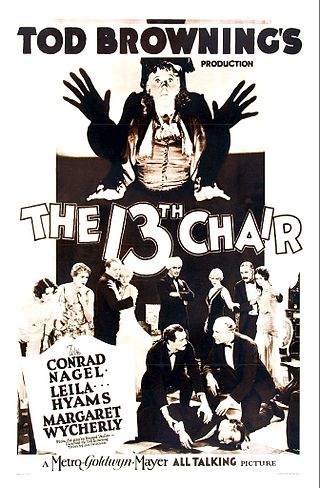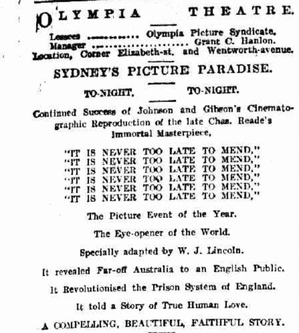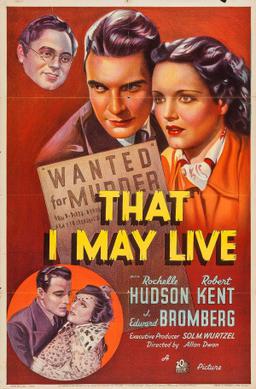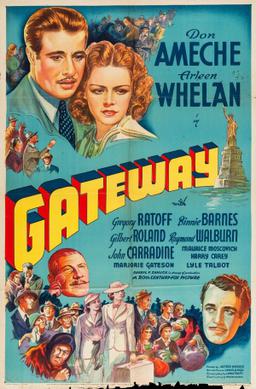A parody film or spoof film is a subgenre of comedy film that lampoons other film genres or films as pastiches, works created by imitation of the style of many different films reassembled together. Although the subgenre is often overlooked by critics, parody films are commonly profitable at the box office. Parody is related to satire, except that "parody is more often a representation of appreciation, while a satire is more often...pointing ...out the major flaws of an object through ridicule." J.M. Maher notes that the "difference is not always clear" and points out that "some films employ both techniques". Parody is found in a range of art and culture, including literature, music, theater, television, animation, and gaming.

John J. Mescall, A.S.C. was an American cinematographer. He photographed such silent films as Ernst Lubitsch's The Student Prince in Old Heidelberg (1927), but he is best known for his work in the 1930s at Universal Pictures, where he often worked on the films of James Whale. Mescall was famous for his elaborate, some might say grandiose, effective camera movements, in which the camera would often track completely across or around a set, or even one performer. He did not always use these kinds of camera movements, but his most famous films all have them.

Norman Carter Slaughter, also known as Tod Slaughter, was an English actor, best known for playing over-the-top maniacs in macabre film adaptations of Victorian melodramas.

Jameson Thomas was an English film actor. He appeared in more than 80 films between 1923 and 1939.
David MacDonald was a Scottish film director, writer and producer.

The Thirteenth Chair is a 1929 American mystery film directed by Tod Browning. The picture is based on a 1916 play of the same name by Bayard Veiller. It stars Conrad Nagel, Leila Hyams and Margaret Wycherly.

The Face at the Window is a 1939 British horror film directed by George King. It was the second sound film adaptation of the 1897 stage melodrama by F. Brooke Warren after the 1932 version.

The Lost Hours is a 1952 British film noir directed by David MacDonald and starring Mark Stevens, Jean Kent and John Bentley. It was produced by Tempean Films which specialised in making second features at the time, and marked Kent's first descent into B films after her 1940s stardom. It was shot at Isleworth Studios and on location around London. The film's sets were designed by the art director Andrew Mazzei. It was released in the United States the following year by RKO Pictures as The Big Frame.

Jack Edwards Livesey was a British film actor.
Wild Boy is a 1934 British comedy sports film directed by Albert de Courville and starring Sonnie Hale, Bud Flanagan and Chesney Allen. It was by Gainsborough Pictures at Lime Grove Studios. The sets were designed by Alfred Junge. Often forgotten, but the role of "Wild Boy" was played by the greyhound Mick the Miller.

The Gang's All Here is a 1939 British black-and-white comedy-mystery, directed by Thornton Freeland and starring Jack Buchanan and Googie Withers. It was produced by Associated British Picture Corporation and released in the U.S. in 1943 as The Amazing Mr. Forrest.

Wings of the Morning is a 1937 British drama film directed by Harold D. Schuster and starring Annabella, Henry Fonda, and Leslie Banks. Glenn Tryon was the original director but he was fired and replaced by Schuster. It was the first ever three-strip Technicolor movie shot in England or Europe. Jack Cardiff is credited as the camera operator.

The Last Frontier is a 1926 American silent Western film directed by George B. Seitz and starring William Boyd, Marguerite De La Motte, and Jack Hoxie. The plot of this film was later reused in the 1948 Columbia Pictures serial Tex Granger.

It Is Never Too Late to Mend is a 1911 Australian feature-length silent film written and directed by W. J. Lincoln.
It Is Never Too Late to Mend is an 1856 novel by the British writer Charles Reade. It was later turned into a play. A ruthless squire becomes obsessed with a younger woman and conspires to have her lover framed and sent to jail.

Gambling Wives is a 1924 American silent melodrama film. Directed by Dell Henderson and produced by actor-producer Ben F. Wilson, it was released through Arrow Films. The film stars Marjorie Daw.

State Penitentiary is a 1950 American drama film directed by Lew Landers and starring Warner Baxter and Onslow Stevens. The film's prison scenes were photographed at the state penitentiary at Carson City, Nevada.

That I May Live is a 1937 American crime film directed by Allan Dwan, written by Ben Markson and William M. Conselman, and starring Rochelle Hudson, Robert Kent, J. Edward Bromberg, Jack La Rue, Frank Conroy and Fred Kelsey. It was released on April 30, 1937, by 20th Century Fox.

Gateway is a 1938 American drama film directed by Alfred L. Werker and written by Lamar Trotti. The film stars Don Ameche, Arleen Whelan, Gregory Ratoff, Binnie Barnes, Gilbert Roland, Raymond Walburn and John Carradine. The film was released on August 5, 1938, by 20th Century Fox.
Marjorie Taylor (1912–1974) was a British stage and film actress. She played the female lead in several Tod Slaughter films during the 1930s.














